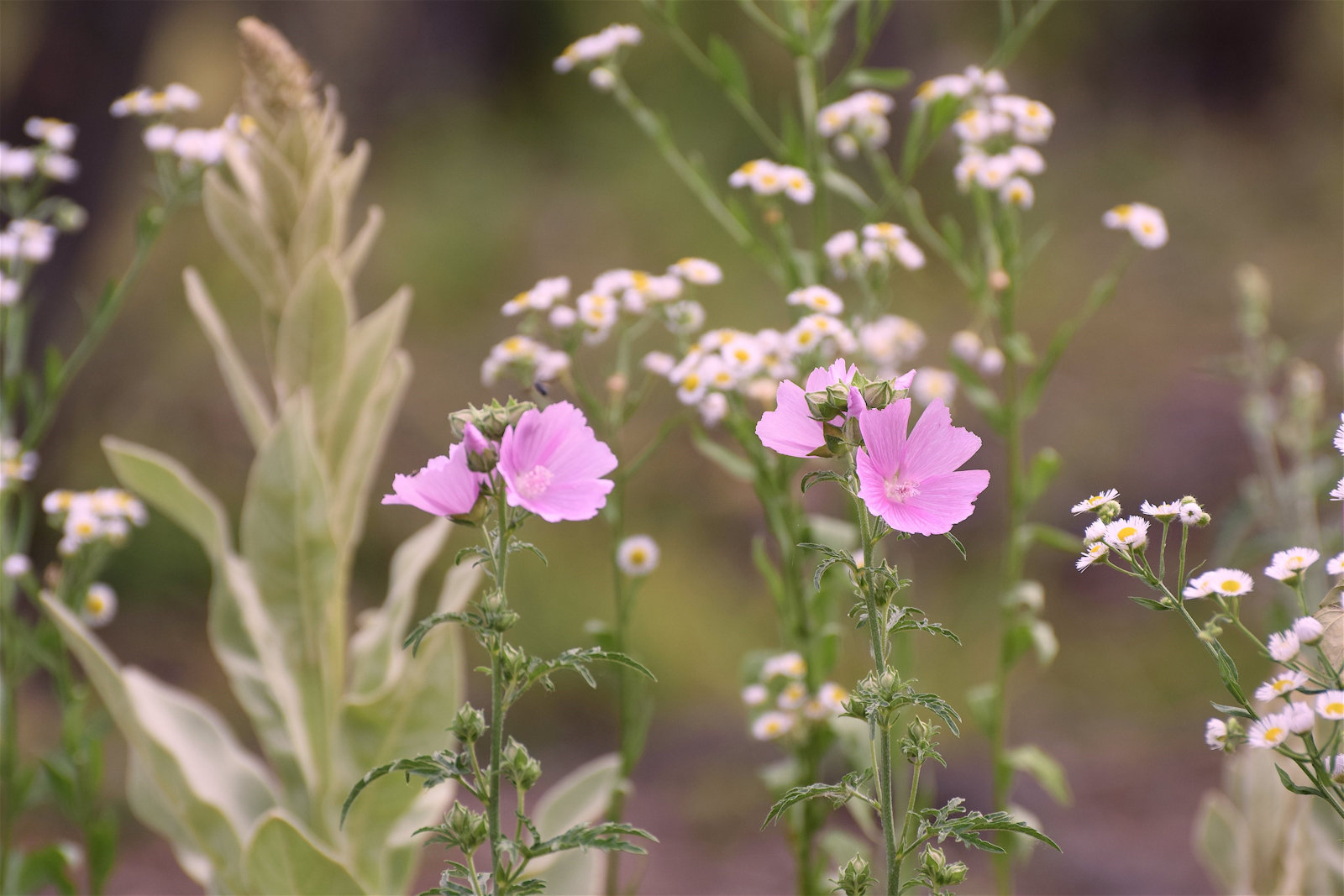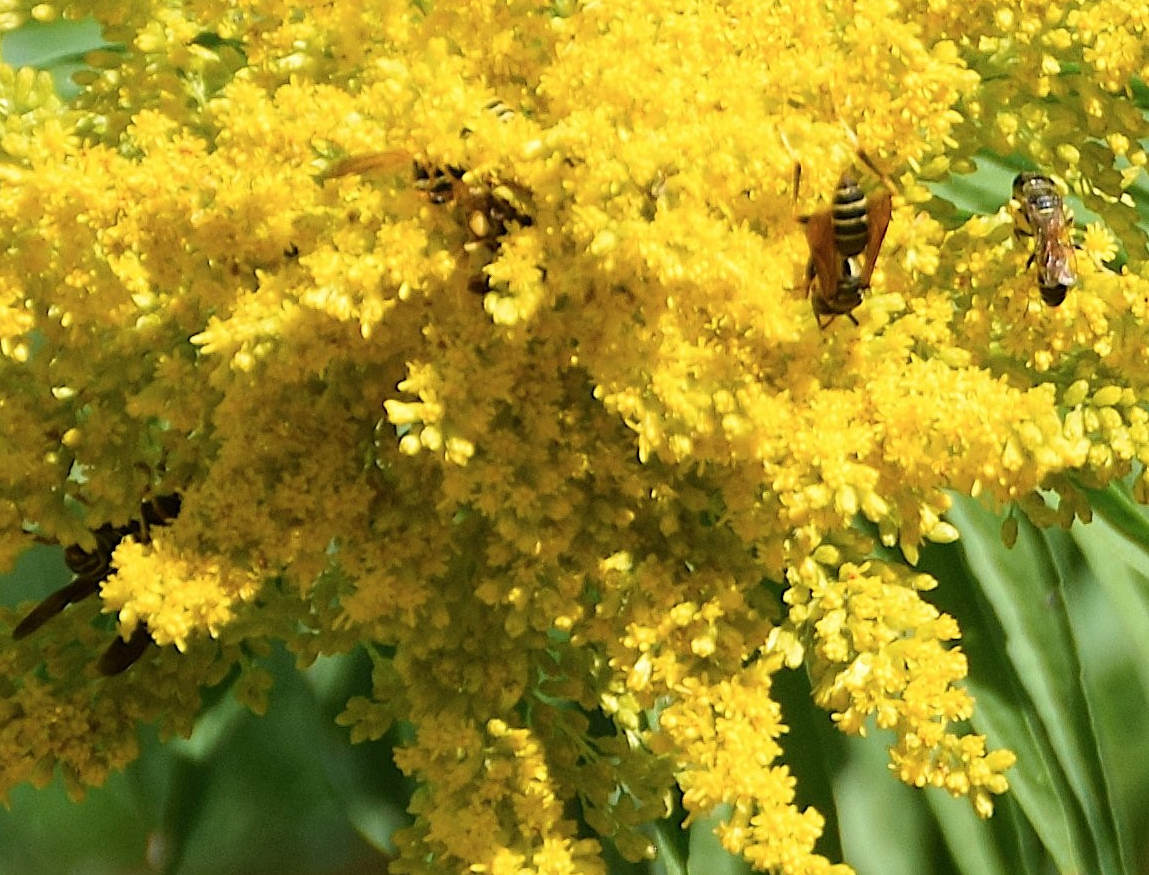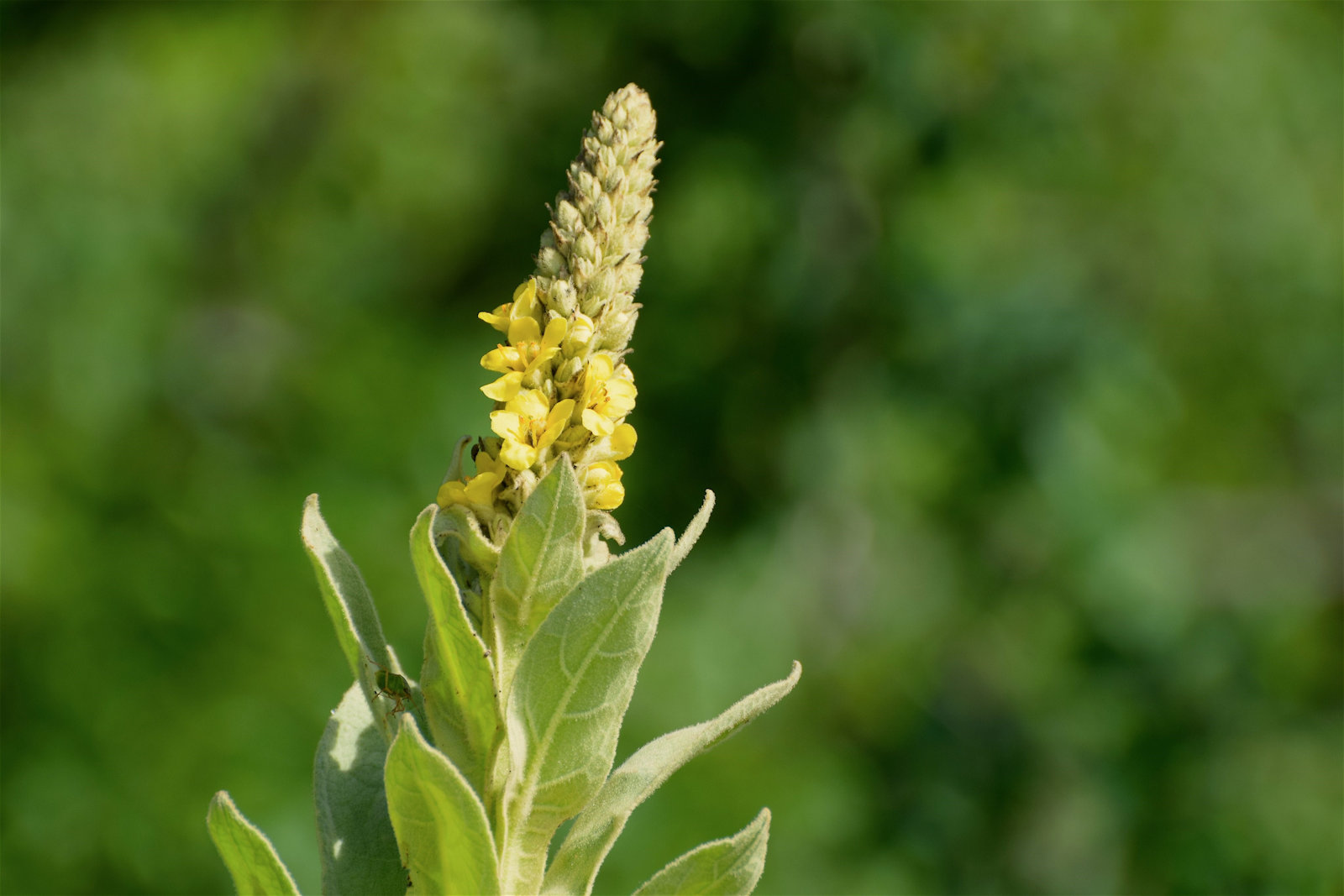by Dave Adams, photos by Nancy
The first season of the Westboro Beach Community Association-sponsored pollinator garden is coming to a close and the garden is being put to bed for the winter for a nice long sleep. Hoping that it will wake up in the spring ready to smile and bring another season of entertainment and delight to the community.
I would call it a wonderful start to the project. And like all native based garden projects, it is a “long game.” It is great to have some real “zingers” to get people excited about the project, but it is important to invest in plants that will return year after year. The following is my report.
Weather
The spring was sufficient with enough rain to get the project going. Transplant shock was NOT an issue except for one white pine. This was too bad because it was a nice specimen that I thought would flourish. I was wrong. July was HELL! It was incredibly hot and dry and I had to go into “survival mode” and keep up with the watering just to keep the young transplants alive. which was my only goal because I knew the conditions were too difficult for them to flourish. August brought rain and the surviving plants came to life and started to really establish. The late summer rains really saved the day.
Invasive plant remediation
Invasives were kept in check easily. I typically went in every 3 weeks with the power whipper and cut back any new growth. Camille Tremblay of the NCC recommended I wrap roots in black plastic, but I was a bit reluctant to introduce plastic to the gardens and instead I experimented with cardboard coverings over the worst areas. I got the idea from Ed Lawrence, the garden guy. This worked quite well and it starved the roots of light.
As a long-term plan for dealing with invasive plants, I recommend a combination of cardboard coverage as well and using a root extractor. The value of the root extractor is that it can expose some healthy dirt during the extraction process and be an excellent microsite for planting fresh seed. Here is an example of the tool: Extractigator. The only problem with this particular tool is that it assumes it is pulling out an existing tree that remains in place. We need to find a tool that can grab the roots alone and pry.
Plant details
Here is a quick summary of each of the plants (both new and old) that live in the pollinator garden.
- Dogwoods. Big success! I did grab some dogwoods from a remote highway. I was able to select specimens that had a healthy mix of Goldenrod mixed in and these all took. We also received a gift of Grey Dogwoods and it has survived the transplant shock. In summary, the dogwoods are a winner and have a bright future.
- Asters. I plunked in a single aster two years ago when it was a buckthorn jungle and it survived. Now that the buckthorn has been removed, this plant flourished and delivered a large wonderful bouquet of purple in late august. It stole the show when the other plants were less prominent. We did introduce some juvenile asters and they struggled but survived. They don’t look like much now but hopefully they may take off but it will be a long game for them.
- Black-eyed Susans. Not the super star I was hoping for but they survived. At best, they got established and perhaps they may flourish in the future.
- Yarrow. July was not kind to this plant and I worked hard to keep them alive with watering but they took off in August. I was not feeling optimistic about them but once the rains came, they took off.
- Silverweed. By far my most favourite and cherished plant. When I die, please cover my grave in this plant! They had a lovely yellow flower and they really started to spread nicely. I would love to get more of it. The downside is that they are hard to maintain because when they are sending out the shoots, they travel over buckthorn saplings that want to compete with them. Normally, it is easy to cut them down but I can’t do that now without damaging the silverweed. I was forced to weed by hand.
- Flowering Raspberry. Was gifted a single plant and it went in. Doing okay.
- Purple Coneflower. Another gift
- Canada Wild Rye. I have three plants coming up from seed. They are pretty meek. I don’t know much about this and don’t see it’s potential.
- Ferns. They did surprisingly well despite the dry conditions. I can see them starting the show in early spring and then going into submission later. I actually think they might work out.
- Cedars. I put in three native cedars in the wet spots. They survived and established well.
- Blue Spruce. Donated. Currently small and needs another 20 years.
- Thistle. It came up on it’s own and was the pollinator insects best friend. It was covered in insects!!! This is clearly an important plant as the insects have indicated.
- Virginia Creeper. It took off and I have taken cuttings and peppered them all down the fence. They love the full sun and the berries were a birds best friend.
- Anise Hyssop. Started from seed. One survived.
- Figwort. Survived and thriving.
- Prairie Fleabane. Came up naturally and turned out to be a hidden surprise. Lovely flowers
- White pines. All transplants took except one. As I say, if we need to plan the “long game” this is the tree we need.
- Milkweed. It was a big failure for me but Briar Howes has dried my tears and made a second attempt at establishing this plant hoping for greater success than me.
- Mullein. They came up naturally and thrived. I plan to keep their flower structures over the winter in case some little beast needs a winter bed.
- Yucca. Placed at entry way on crown of rocks. Another one of my favourite plants because it does not need water and has amazing flowers.
- Goldenrod. We have about 3 plants that we planted and the remainder came with the Dogwoods. Considering how important this plant is, I would like to get more of it. It is basically the last food source for the Monarchs before they head south.
- Grasses. We had nice “tuffs” of grasses come up. These are NOT lawn grass but something different. They look interesting and maybe some grass person could educate me.
Wanted list
- More asters because they bloom in the fall when everything else is leaving town. They prolong the blooming season
- Silverweed
- Yarrow
- Goldenrod
Next steps
- The first priority is to maintain existing plants. Over time, the buckthorn will die off, provided we are on top of it, and the plants like the silverweed will take over.
- If we get Phase 1 under control we can start expanding eastward to the SJAM Winter Trail Snow Gate. There is lots of land there that has been cleaned of buckthorn.
- Royal Forest. Our community has been gifted with an incredible “diamond in the rough.” It is the sector of land immediately north of Royal Avenue and in this thicket of horrible buckthorn are mature and majestic white pines, scotch pines, blue spruce, maple trees, and lilacs. For very little cost, this thicket could be cleaned of invasive species, chipped and the native trees could be gifted to the community. I envision it as a place to “leave the city” and put up a hammock between the giant trees for an afternoon with a book. I would love to champion this project myself but would need the approval of the NCC. One day with a wood chipper is all that it would take to reveal this incredible forest and add enormous value to Selby Plains.
In conclusion, I think we are off to a wonderful start and this small project has brought a lot of simple joys to many passer-byers. There was very little opposition to cutting down the buckthorn once people understood that it was for a pollinator garden. Selby Plains and Atlantis woods is important to our city and it is the Westboro Beach Community Association’s gift to our community.
A huge thank you to the Fletcher Wildlife Garden folks who donated the base stock of wonderful plants (especially my favourite Silverweed!). Thank you Sandy Garland.
And we did get some press!!! See Community association works to give back safely and stay engaged.
Nancy from Canada has also documented the garden in pictures. Thank you Nancy.
Dave Adams, who lives near the Sir John A. Macdonald (SJAM) Parkway, is the SJAM winter trail manager and head groomer. He also devotes considerable time to removing invasives and planting native species.





Bonjour ! Je peux utiliser certains de vos articles ? Collie Corny Chassin
Dave:
I visit the Selby Plains/Atlantis Pollinator Garden.
I moved recently to Atlantis Ave and found this garden, and also an empty birdfeeder. I am putting seeds into it and small plate with water underground beneath it.
I hope it is fine to feed birds. I saw a chipmonks eating seeds inside it. Every time I visit there, I saw an empy plate. I guess some dog is drinking water from the container.
I was hoping the birdfeeder with full seeds attrancted birds coming to it but I have seen only one or two sparrows(?), particularly one sparrow appears whenever I come to the garden to put seeds. She must know the reason why I am there.
I just wanted an approval from you that it is OK to fill the birdfeeder.